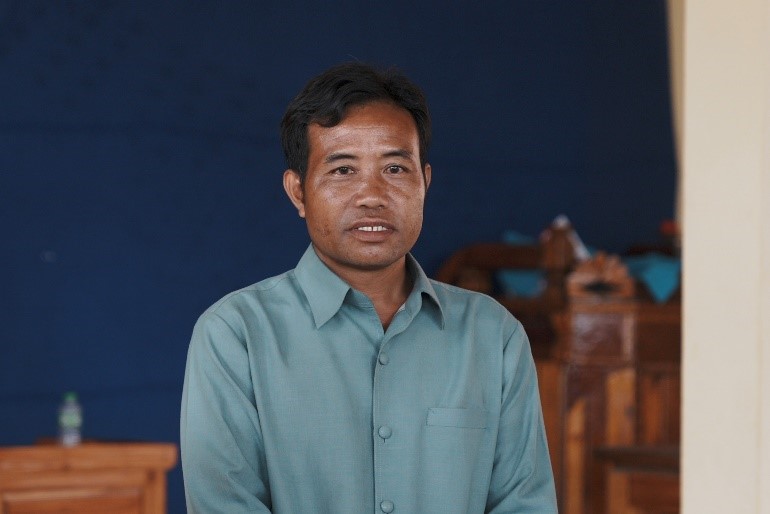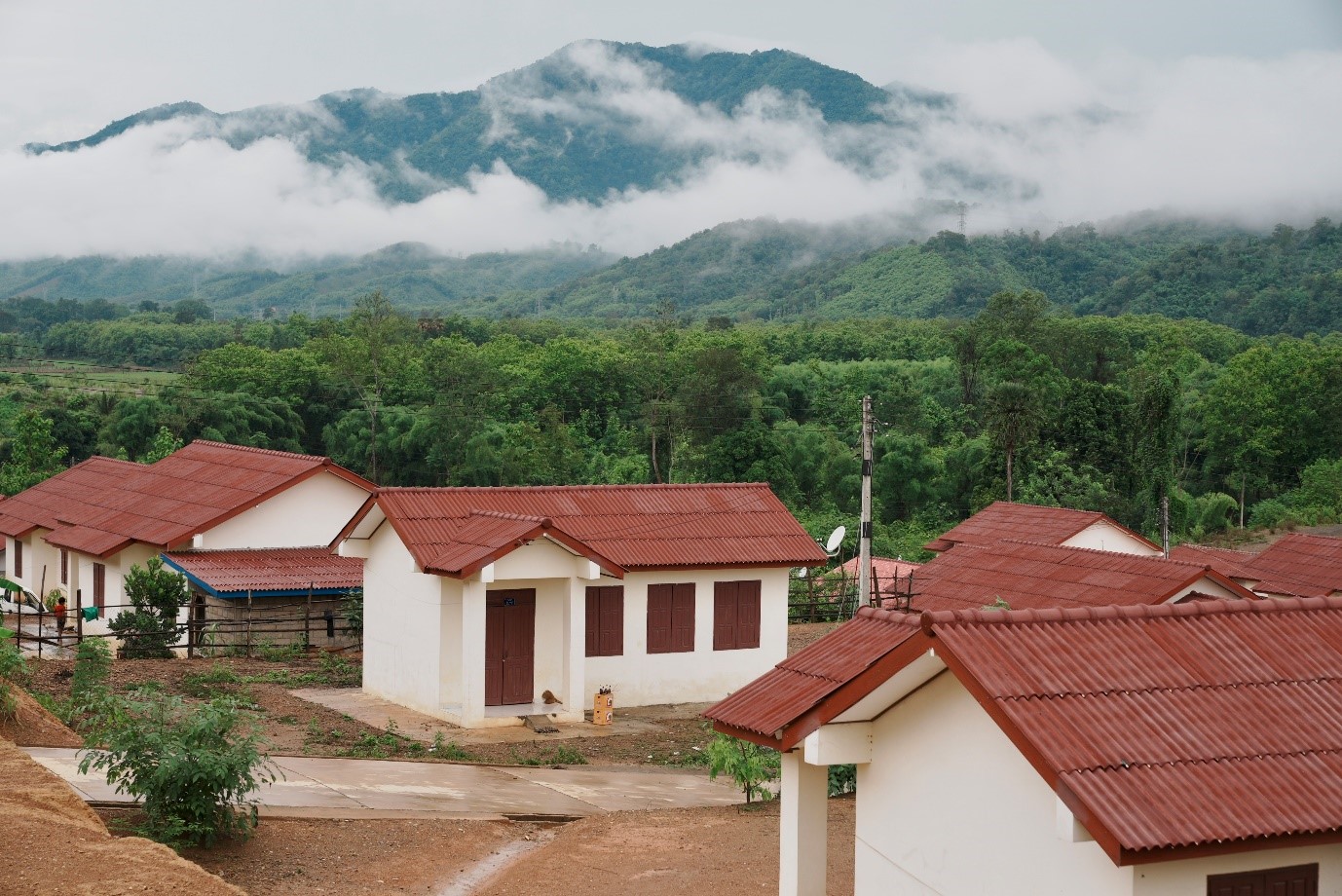
Three years on, Lao villagers who were resettled for the construction of the China-Laos railway say they are satisfied with their new dwellings, which have greatly improved the people’s living conditions.
READ MORE: Village renaissance
“We are very happy and satisfied with the facilities and the new houses provided,” said Somphong Seumboun, chief of the Buam Aor village, Xiang Ngeun district of Luang Prabang province in northern Laos. “I am thankful for the government and the authority that provided the place for us to live here.”
Compared with the old village, Somphong said the road condition is also much better in the resettlement village
The Buam Aor Resettlement Village is one of the four relocated villages along the China-Laos railway, which in total provided 349 households with houses that are equipped with lighting and digital TV, and public facilities such as village office, school, health center, public toilets and garbage collection points, according to information released by the Chinese consulate in Luang Prabang province.
The infrastructure construction also includes the roads inside and outside the village, electricity, water supply and drainage system.
Construction of the Buam Aor village started in April 2021 and completed in March 2022.
READ MORE: China-Laos rail link boosts the flow of people, goods
An official ceremony on the resettlement was held in April 2022, during which former Lao Minister of Public Works and Transport Viengsavath Siphandone and former Chinese Consul General in Luang Prabang Li Zhigong jointly planted a friendship tree in front of the village.
Having started to move in since 2021, Somphong said there are now a total of 107 families, comprising 482 people, living in the newly relocated village.

“Overall, the living condition is very good here. The livelihood of the people here is good because people do not have to spend a lot of money on housing; so they can just save as much as they can earn,” said Somphong.
Compared with the old village, Somphong said the road condition is also much better in the resettlement village.
“The relocation project provided all the compensation, including land,” said Somphong, noting that the villagers used to have a land area of 300 square meters for farming, but now have 600 square meters per household.
READ MORE: 'From land-locked to land-linked'
Somphong said most of the villagers rely on farming for a living, with a few of them working as company employees, teachers, police or medical staff.
“Some young people are also working with the Laos-China railway, about over ten people,” said Somphong.
“I am so happy to live here,” said 41-year-old villager Sone, who only shared his given name. He said the new village is far from the railway, so it is much quieter and the village is bigger.

Sone said he has taken the China-Laos railway to Vientiane and found that the travel experience was very comfortable.
With a family of six people, Bounsy Thatsanavong, 65, said he is happy to see the project happen because the local people got a lot of benefit from it.
Through the interaction with the Chinese construction team, Bounsy also learned some simple Mandarin phrases such as ni hao (hello) and xie xie (thank you)
Through the interaction with the Chinese construction team, Bounsy also learned some simple Mandarin phrases such as ni hao (hello) and xie xie (thank you).
READ MORE: China-Laos Railway demonstrates strong passenger, freight growth
Noting that the farm land is a bit far from the new village, Somphong said he hopes more assistance can be provided to the village to help them build a road to make it easier for villagers to transport agricultural goods.
“If we cannot get any more assistance, maybe I will try to work with other villagers to build a road on our own,” the village chief said.
Stretching 1,035 kilometers to connect Kunming in southwest China’s Yunnan province with Lao capital Vientiane, the China-Laos Railway is a docking project between the Belt and Road Initiative and Laos' strategy to transform itself from a landlocked country to a land-linked one.
READ MORE: Belt and Road achievement
As of June 19, the Laos section has carried a total of 5.72 million passengers, according to the Laos-China Railway Co, a joint venture between Laos and China based in Vientiane. Of that number, a total of 1.69 million passengers were carried in 2024, a year-on-year increase of 41.3 percent, with a daily average of 9,864 passengers.
Contact the writer at kelly@chinadailyapac.com


